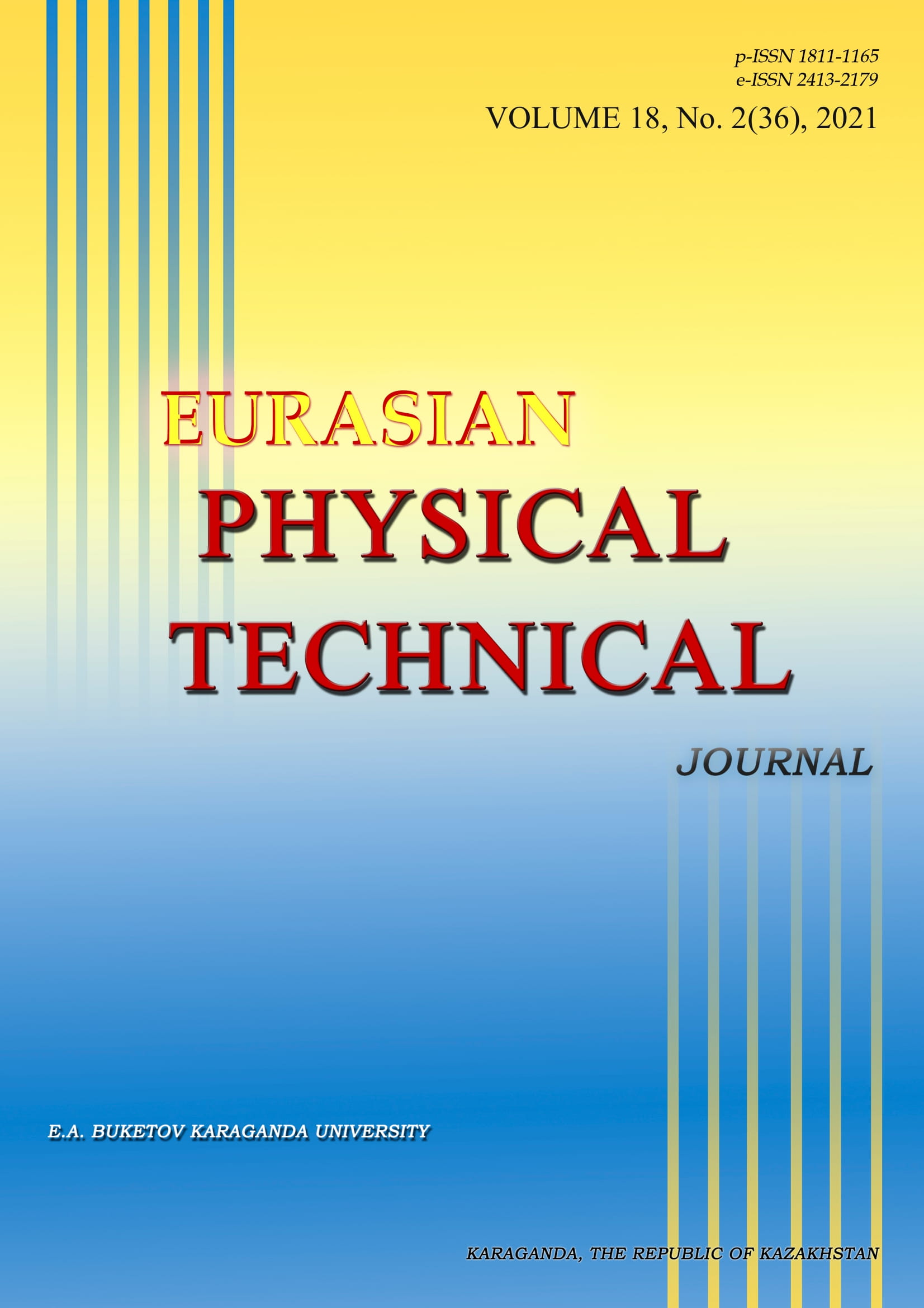SPECTRAL AND LUMINESCENT PROPERTIES OF CARBON QUANTUM DOTS FUNCTIONALIZED WITH N- AND S-CONTAINING GROUPS
DOI:
https://doi.org/10.31489/2021No2/12-17Keywords:
carbon quantum dots, microwave synthesis, fluorescence, electron microscopy, atomic force microscopy, fluorescence quantum yield.Abstract
"In the presented work, carbon quantum dots were obtained by microwave synthesis based on citric acid and L-cysteine. The resulting particles were characterized by electron and probe microscopy, dynamic light scattering and Fourier transform infrared spectroscopy. The spectral and luminescent properties were investigated for the initial solution of carbon quantum dots, as well as solutions obtained as a result of dialysis of the synthesized product. It is shown that all samples exhibit the same optical properties. At the same time, the measurement of quantum yields showed that carbon dots that have passed through the dialysis membrane have the best fluorescent ability. "
References
"1 Molaei M.J. The optical properties and solar energy conversion applications of carbon quantum dots: A review. Solar Energy, 2020, Vol.196, pp. 549–566.
Wang Y., Hu A. Carbon quantum dots: synthesis, properties and applications. J. Mater. Chem. C, 2014, Vol.2, pp. 6921–6939.
Jhonsi M.A. Carbon Quantum Dots for Bioimaging. Available at: www.intechopen.com/books/state-of-the-art-in-nano-bioimaging/carbon-quantum-dots-for-bioimaging (June 20, 2018)
Yuan T., Yuan F., Li X., et al. Fluorescence–phosphorescence dual emissive carbon nitride quantum dots show 25% white emission efficiency enabling single-component WLEDs. Chem. Sci., 2019, Vol.10, pp. 9801–9806.
Dong Y., Pang H., Yang H.B., et al. Carbon-Based Dots Co-doped with Nitrogen and Sulfur for High Quantum Yield and Excitation-Independent Emission. Angew. Chem. Int. Ed., 2013, Vol.52, pp. 7800–7804.
Qu S., Liu X., Guo X., et al. Amplified Spontaneous Green Emission and Lasing Emission From Carbon Nanoparticles. Adv. Funct. Mater., 2014, Vol.24, pp. 2689–2695.
Lin H., Huang J., Ding L. Preparation of carbon dots with high-fluorescence quantum yield and their application in dopamine fluorescence probe and cellular imaging. Journal of Nanomaterials. 2019, Article ID 5037243, pp. 1 – 9. Available at: https://doi.org/10.1155/2019/5037243 (Oct 17, 2019)
Song Y., Zhu Sh., Zhang Sh. et al Investigation from chemical structure to photoluminescence mechanism: a type of carbon dots from the pyrolysis of citric acid and an amine. J. Mater. Chem. C, 2015, Vol. 3, pp. 5976–5984.
Wang T., Wang A., Wang R., et al Carbon dots with molecular fluorescence and their aplication as a “turn-of” fuorescent probe for ferricyanide detection. Scientific Reports, 2019, Vol.9. Available at: www.nature.com/articles /s41598-019-47168-7 (July 24, 2019)
Essner J.B., Kist J.A., Polo-Parada L., et al Artifacts and Errors Associated with the Ubiquitous Presence of Fluorescent Impurities in Carbon Nanodots. Chem. Mater. 2018, Vol.30, pp. 1878−1887.
Ibrayev N.Kh., Ishchenko A.A., Afanasyev D.A., et al Active laser medium for near-infrared spectral range based on electron-unsymmetrical polymethine dye and silver nanoparticles. Appl. Phys. B. 2019, Vol.125, pp. 1–7.
Seliverstova E., Ibrayev N., Omarova G., et al Competitive influence of the plasmon effect and energy transfer between chromophores and Ag nanoparticles on the fluorescent properties of indopolycarbocyanine dyes. Journal of Luminescence, 2021, Vol. 235, p.118000. DOI:10.1016/j.jlumin.2021.118000
Wanga W., Zeng Zh., Zeng G., et al. Sulfur doped carbon quantum dots loaded hollow tubular g-C3N4as novel photocatalyst for destruction of Escherichia coliand tetracycline degradation under visible light. Chemical Engineering Journal, 2019, Vol. 378, p.122132. DOI:10.1016/j.cej.2019.122132
Xia Ch., Hai X., Chen X.W., et al. Simultaneously fabrication of free and solidified N, S-doped graphene quantum dots via a facile solvent-free synthesis route forfluorescent detection. Talanta, 2017, Vol.168, pp. 269–278.
Wang Y., Kalytchuk S., Zhang Y., et al. Thickness-Dependent Full-Color Emission Tunability in a Flexible Carbon Dot Ionogel. Phys. Chem. Lett., 2014, Vol.5, pp. 1412−1420.
Roy P., Po-Cheng Chen P., Periasamy A.P., et al. Photoluminescent carbon nanodots: synthesis, physic-chemical properties and analytical applications. Materials Today, 2015, Vol. 18, No 8, pp. 447-458. DOI:10.1016/j.mattod.2015.04.005
Park M., Kim H.S., Yoon H., et al. Controllable Singlet–Triplet Energy Splitting of Graphene Quantum Dots through Oxidation: From Phosphorescence to TADF. Advanced materials, 2020, Vol. 32, No. 31, pp. 2000936 (1-10). DOI: 10.1002/adma.202000936."













